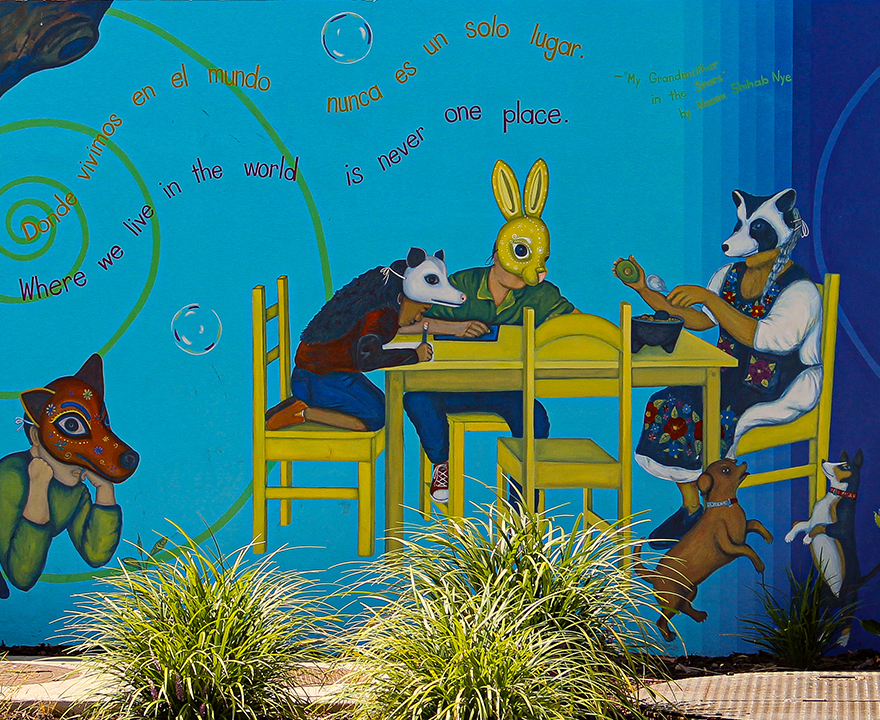
Archiving something new under the sun
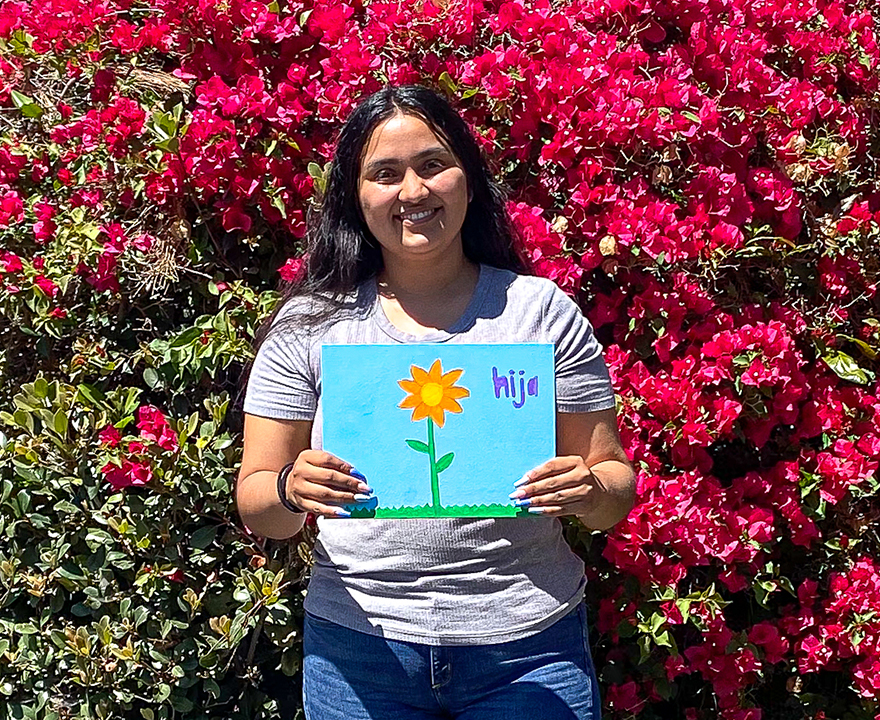 The sun in the sky, people have found over time, is a very predictable fellow. Not
so its namesake El Sol Academy. The much-lauded school—full name, El Sol Science and
Arts Academy of Santa Ana--has been in flux since it first began teaching K-1 students
in an old house 21 years ago. Now the school has over 1,000 students from preschool
through the 8th grade, and its footprint has expanded to occupy the better part of
a city block, both in vintage buildings and in newer classrooms with a cheery space-age
vibe.
The sun in the sky, people have found over time, is a very predictable fellow. Not
so its namesake El Sol Academy. The much-lauded school—full name, El Sol Science and
Arts Academy of Santa Ana--has been in flux since it first began teaching K-1 students
in an old house 21 years ago. Now the school has over 1,000 students from preschool
through the 8th grade, and its footprint has expanded to occupy the better part of
a city block, both in vintage buildings and in newer classrooms with a cheery space-age
vibe.
When El Sol opened in 2001 it was nearly the only school in Orange County practicing dual language immersion in Spanish and English in every class. Its success proved to be a beacon for others, and there are now dozens of dual language immersion schools in the county. El Sol has also been a boon to its immediate community, hosting a wellness center that UCI’s School of Nursing helped establish, a food pantry and events and student art projects that have brightened the neighborhood.
The academy had its 20th anniversary in 2021. “That’s a good time to stop and reflect on your history, to make an assessment of where you've been and how that influences where you're going next. But we were busy dealing with COVID,” says El Sol executive director Monique Daviss.
She further realized, “We’d been so active moving, growing, expanding our grade levels and dealing with the present that we never really had time to properly gather our history and make something of it.”
Enter serendipity in the form of UCI Chicano/Latino studies and history associate professor Ana Elizabeth Rosas. Along with several of her students, Rosas spent much of this past summer gathering, sorting and archiving El Sol’s history, not just the facts of it, but also crafting an emotive history of what the academy has meant to its students and its community.
Rosas was already experienced at capturing history. In 2017, she says, “Students in my Introduction to Latino Studies course were coming to me with their worries about the uncertainty of our country’s immigration policy. They felt the history of immigrants’ contributions to this country was being drowned out by negative attitudes towards immigration. They wanted to know how to proactively teach others about that history.”
The result was "The Material of Memory: Revisiting our Immigration Histories," an exhibit displayed that year in the Student Center’s Viewpoint Gallery. “It sprang from my students’ idea to talk with their relatives, friends and others they knew about their own immigration history, and to share those conversations, along with photographs and material items from people's homes that resonated as touchstones of their migrant history. The result was a great collaboration that brought a lot of students, families and members of the public there to learn from history.”
Rosas grew up in South-Central Los Angeles, and was the first member of her family to earn a college degree, beginning with a B.A. in history, American studies and ethnicity, and a subsequent M.A. and Ph.D. in history, all from USC. She joined the UCI faculty with a dual appointment in Chicano/Latino studies and history in 2007.
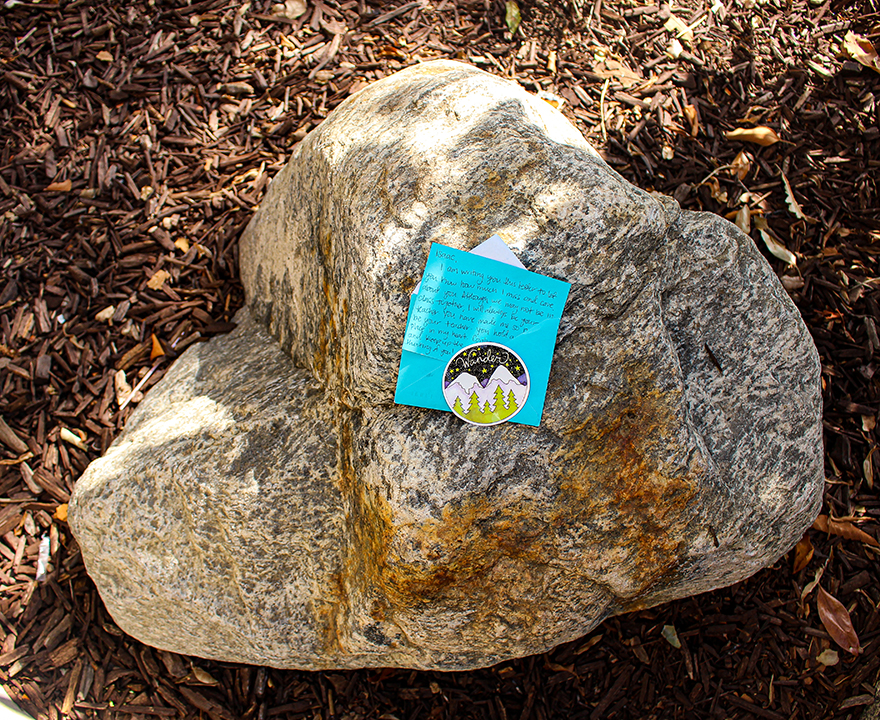 Her work at UCI has been recognized with numerous prizes and honors, including the
Organization of American Historians Huggins-Quarles Prize, UCI’s Community and Civic
Engagement Program’s Engaged Faculty Award and two awards recognizing something close
to Rosas’ heart: her mentorship of students.
Her work at UCI has been recognized with numerous prizes and honors, including the
Organization of American Historians Huggins-Quarles Prize, UCI’s Community and Civic
Engagement Program’s Engaged Faculty Award and two awards recognizing something close
to Rosas’ heart: her mentorship of students.
Regarding that, in 2018 social sciences dean Bill Maurer said of Rosas, “She has an enormous dedication to undergraduate research mentoring and the mentoring of students from underrepresented backgrounds. Professor Rosas is a highly sought-after mentor who provides our students--many of them first-generation and from underrepresented minority backgrounds--truly meaningful, impactful research experiences.”
Rosas simply feels it’s the right thing to do, saying, “I find that if you really work with students, they run with it, and can do great things. I see a lot of my experience in them, because that's how I was raised, to really invest yourself in your education with a lot of caring and imagination. I’ve always very much enjoyed learning from people who are intent on getting things done. So I love these opportunities to work with students who are inspired to learn how to participate in the world and make a difference.”
One of those inspired students assisting with the El Sol project is Angelica Flores. Now entering her junior year, she’s majoring in criminology, law and society with a minor in Chicano/Latino studies, which she plans to elevate to double major status.
Flores began taking Rosas’ classes in her freshman year, in virtual form due to the pandemic. When they eventually began meeting during office hours, Rosas raised the idea of Flores working with her in a seminar in the fall 2021 quarter.
Rosas says, “She's a student who has been very responsive to the responsibilities and possibilities of a seminar, taking every opportunity to connect with people. She’s one of a group of students that went with me to the UC Links conference in Berkeley earlier this year, and she was very intent on networking and connecting ideas and people. She had really taken ownership of not letting the limitations of COVID stand in the way of connecting with people meaningfully. And she has been consistently energetic and compassionate in contributing to our activities with El Sol.”
Rosas’ own relationship with El Sol began in 2019 when the school’s poet-in-residence Sue Cronmiller (who earned her MFA in poetry at UCI) enlisted her support toward the implementation of a creative writing UC-Link curriculum there. That year Rosas also began teaching a series of El Sol Zoom workshops, with a lot of input from her students.
UCI has a long history with the El Sol Academy, beginning with now-retired UCI Vice Chancellor Manuel Gomez, who has been active in helping the academy since its inception, Daviss says. Educators from several of the university’s schools have also assisted over the years.
Rosas and Flores began working on El Sol’s history nearly a year ago, as time allowed. The project got a considerable boost this past summer thanks to Rosas being awarded a Spirit Award from UCI’s Office of Inclusive Excellence. It included a prize to support her Public Scholarship Summer Institute work, allowing her to pay a modest stipend to the graduate and undergraduate students assisting with the El Sol project.
Rosas’ encouragement also paved the way for Flores growing in her public scholarship: “One day I told her, ‘You know, you've done really well with UC Links and with the El Sol work so far. I think you're poised to do well if you apply to the Imagining America Consortium’s “Joy of Giving Something” fellowship.’ She applied was granted the fellowship, which provides an opportunity to learn more about how to use photography and other media to tell stories of community partnership and collaboration.”
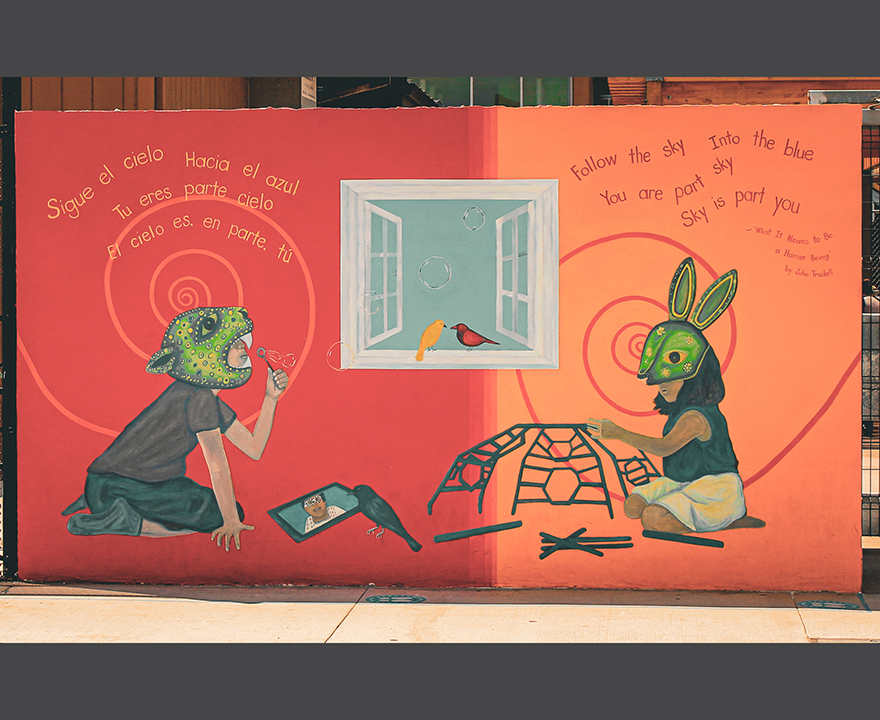 Flores was further inspired by joining in a Public Scholarship Summer Institute conversation
with University of Texas professor Maria Cotera, of whom she says, “Professor Cotera has a website, the Chicana por mi Raza Digital Memory Collective, where she collects photographs, newspaper articles and
other documents, and writes about them as a way for people to get a greater understanding
of the women who were behind immigrant movements going back to the 1920s. She guided
us through ways we can incorporate the techniques and technology she uses into our
current work of documenting El Sol.”
Flores was further inspired by joining in a Public Scholarship Summer Institute conversation
with University of Texas professor Maria Cotera, of whom she says, “Professor Cotera has a website, the Chicana por mi Raza Digital Memory Collective, where she collects photographs, newspaper articles and
other documents, and writes about them as a way for people to get a greater understanding
of the women who were behind immigrant movements going back to the 1920s. She guided
us through ways we can incorporate the techniques and technology she uses into our
current work of documenting El Sol.”
That work has included - with the support of El Sol administrators, teachers, and Cronmiller - the UCI students learning from stories about the academy from El Sol’s founding parents, foundation members, students and others. They assisted Rosas in presenting workshop series curriculum in classes to better understand how the dual immersion process functions. They also gathered photographs, documents and other artifacts.
Rosas stresses, “What we did this summer was working together as a team of students: ours and theirs. We wanted to be very conscious about following El Sol’s lead, to understand how we can best support their goals.
“The El Sol students have been providing us with their contribution to an archival project where we've collected materials that the students have contributed in the form of certificates, photos and artwork, from paintings to figurines they’ve made.”
And then there are the letters.
Daviss recalls, “I was cleaning out some file cabinets and came across a big stack of letters written a couple of years after the school opened. I guess there was a project then to have parents and siblings put their hopes and dreams for our students into writing. I started reading them and told Ana, ‘You have to look at these letters! This is kind of amazing.’ When she read them, I think she saw how much these parents’ hopes went to the heart of what El Sol is about, and something to which she and her students could anchor their scholarship.”
Rosas says, “These parents wrote letters supporting the participation of their children in the school, especially for them to have an appreciation for the dual immersion qualities of the curriculum, which was so unlike what other schools were doing. The letters are written in English and Spanish, and there's a lot of emphasis on appreciating language, not only as an asset or skill, but as a way of self-understanding, and of deepening their sense of history and ethnicity.”
Flores has spent a lot of time reading and assessing the letters. More than a few of them, she says, moved her to tears.
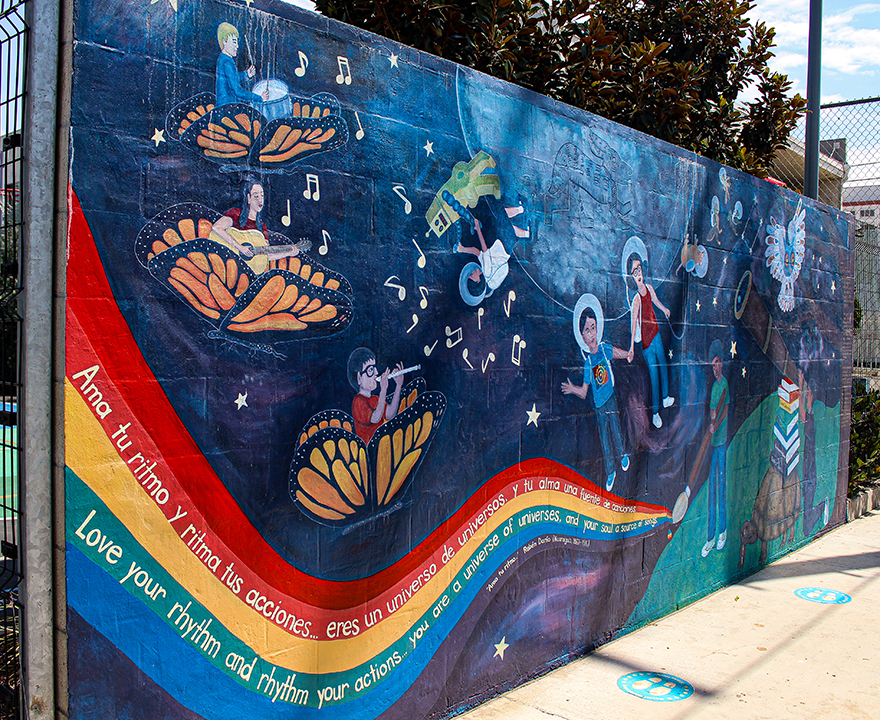 “There were so many! The ones that were the most emotional and touching for me were
ones parents wrote to their children about their hopes for them; how important this
education was to their futures, but also how important their past was.
“There were so many! The ones that were the most emotional and touching for me were
ones parents wrote to their children about their hopes for them; how important this
education was to their futures, but also how important their past was.
“They talked about how their bilingual education would enable them to continue learning, connect with more individuals, gain a greater understanding of the world and have a role in its future. But they also stressed that however many languages they might learn or wherever they might go, their Spanish will always help their minds and hearts to feel a sense of belonging to their families and cultural heritage.”
The letters will play a part in both of the end goals that Rosas sees for their work. One is to organize and archive El Sol’s history in a manner that will be useful to future generations of students and researchers. The other is to create a public history exhibit of the school’s letters and artifacts, ideally to go on display next spring in a turn-of-the-20th-Century house on the El Sol campus.
After completing the summer leg of her El Sol efforts, Flores spent the rest of her time before fall quarter in her hometown of Sunnyvale in the Bay Area. While there, she assisted, as she has for nine years now, a homelessness prevention program, helping to provide food, clothing and other needs.
“I think a lot of what I do has to do with my upbringing,” she explains. “I've always been in a very lower-income household, much of it with just one parent, sometimes close to homeless, with very restricted opportunities. So I don’t take opportunities for granted when they come along now, and I also know how important they can be for others. So now I make as many connections and embark on as many projects regarding education and income equality as I can.
“My long-term career goal is to go to law school and focus on immigration law. I was born in Mexico and came here with my family before I turned seven. It took 13 years for my parents to get their permanent residency, and we experienced a lot immigration issues as well as physical, economic and emotional hardships. Experiencing that jumpstarted my desire to educate myself to become an immigration attorney.”
Rosas, when asked to reflect on their work with on El Sol, says, “I've always liked the idea of bringing people together. That’s been key to my experience at UCI. It’s been fantastic to see students be a part of a project. As they begin to participate, the project starts to grow and be very reflective of the students in the room.
“When I was an undergrad, what I benefited from most was smaller, seminar-style classes. I like that way of connecting people. Instead of just lectures, it’s hearing each other out. That’s been the glue to so much. What really energizes me in our work with El Sol is seeing students incrementally taking on more work, being more creative and not just focusing on getting the project done, but also asking, ‘What more can we do?’”
-Jim Washburn for UCI Social Sciences
-pictured top to right, down: Mural at El Sol. UCI alumna Melanie Mendoza after completing
an institute workshop. An archival item that an El Sol student enrolled in Mr. Brandon
Torres's 8th-grade class contributed to the El Sol Academy archival document collection.
Murals at El Sol. Photos courtesy of UCI alumna Alice G. Terriquez.


